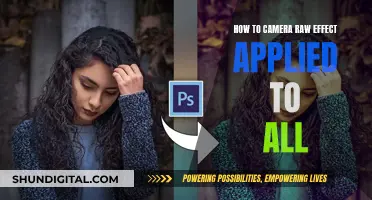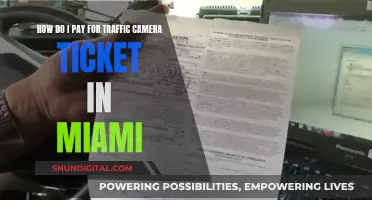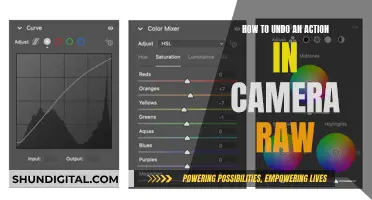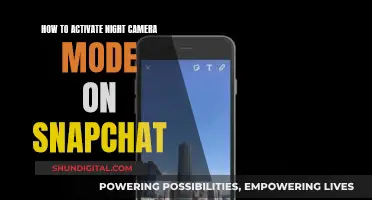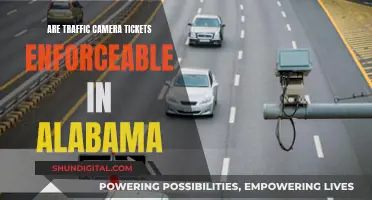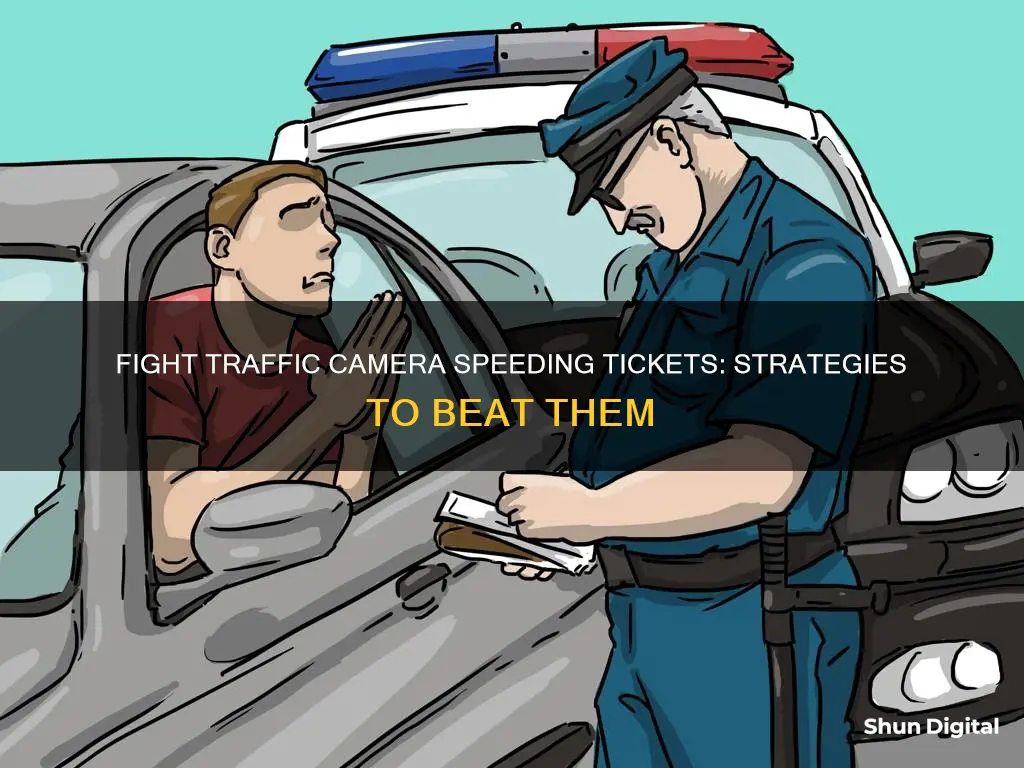
Getting a speeding ticket in the mail is never fun, especially when it's from a camera. The good news is that in some jurisdictions, you can simply ignore it without penalty. But if you want to fight it, there are a few things you can do. First, examine your ticket and the included photos. Make sure the date, time, and location are correct, and that it's definitely your car in the photo. You can also check the camera's maintenance records and research the applicable laws to see if there are any loopholes you can use in your defence. When it's time for your hearing, dress nicely and be respectful to the judge and courthouse staff. Present your case clearly and concisely, and don't be afraid to object to any inaccurate statements made by the plaintiff.
| Characteristics | Values |
|---|---|
| Check ticket details | Check the date, time, and location of the ticket. Confirm that you were driving the car when the ticket was issued. |
| Understand the law | Make note of the exact code section you're cited for violating. Read the law to understand the elements and penalties for violation. |
| Review evidence | Request and review photos and other evidence, such as camera maintenance records. Look for inconsistencies or lack of clarity in the evidence. |
| Plead not guilty | Respond by mail, online, or in-person within the specified deadline, typically 30 days. Plead not guilty if you want to dispute the ticket. |
| Request a hearing | Demand a full formal hearing or trial. Attend any required hearings, such as pre-trial hearings or mediation, but aim for a full dismissal of the ticket. |
| Research defences | Look for applicable law, including appellate court decisions on the legality of traffic camera tickets. Research specific defences, such as warning sign requirements or necessity defences for speeding. |
| Present your case | Arrive at the hearing with copies of your evidence and present your defence. Challenge the admissibility of evidence, dispute authenticity, and raise relevant defences. |
What You'll Learn

Check the ticket details: date, time, location, and code section
When you receive a traffic camera ticket, the first thing you should do is check the ticket details: date, time, location, and code section. This is important because you need to be sure that you were actually driving the car when the ticket was issued. Generally, the prosecutor must prove that you were driving in that location at the date and time stated on the ticket. If someone else was borrowing your car, you cannot be prosecuted.
However, it's important to understand that some states, like New York, treat red-light camera tickets as parking violations, holding the registered owner of the car responsible rather than the driver. So, make sure to check the red-light law in the jurisdiction where you received the ticket.
If you were indeed driving your car, try to reconstruct the scene and remember what you were doing or what was happening at the time. Write down any details you remember, as this may help you build your defence. For example, you may have been making a legal right turn on a red light when the camera took the photo. If you were making a legal manoeuvre, you should be able to get the ticket dismissed.
Make a note of the exact code section you're cited for violating. Read the law and make sure you understand both its elements and the associated penalties. Check if the penalties listed in the code section match the fines or penalties on your ticket. Remember, it's the prosecution's burden to prove each element of your violation—it's not your responsibility to prove that you didn't do it.
Beating a Camera Speeding Ticket in New Orleans
You may want to see also

Review photos for blurriness and unclear license plates
If you've received a speeding ticket, you should first examine the ticket. Check the date, time, and location, and confirm that you were driving the car when the ticket was issued.
Next, review the photos. If the notification includes photos, check that it's your car in the photo, and that the photo is clear. Blurry photos or unclear license plates may be your best defense. If the license plate isn't clearly visible, it may be difficult to confirm that the car is yours.
If there's no clearly identifiable photo of you in the driver's seat, this may present another defense. You will be under oath, so you can't argue that you weren't driving if you were. However, you can argue that the prosecution can't prove you were driving or has no evidence that you were driving. This will get you off the hook if you live in a jurisdiction that requires tickets to follow the driver, not the registered owner of the car.
Storing Camera Bags in Cars: Tips for Safe Travel
You may want to see also

Plead not guilty by mail, online, or in court
If you want to fight a traffic camera ticket, you must plead not guilty. You can do this by writing to the traffic court, filling out a form, or appearing at an arraignment. Here are the steps you can take to plead not guilty by mail, online, or in court:
- Read your ticket carefully: Your ticket will include important information about your rights and how to respond. Note the deadline by which you must enter your plea.
- Gather information: Review any photos or witness statements related to the incident. Decide whether to plead not guilty based on the strength of your defense.
- Consider the costs of pleading not guilty: Review your ticket and driving record to determine if it would be easier to just pay the fine. If this is your first offense, you may be eligible to attend traffic school instead.
- Decide how to plead: Remember that you have the right to plead not guilty, regardless of whether you committed the infraction. By pleading not guilty, you are forcing the state to prove beyond a reasonable doubt that you committed the violation.
- Find out if there's a required form: Some jurisdictions provide a form for notifying the traffic court of your plea. This form may be included with your ticket or available on the court's website.
- Draft your letter: If no form is available, write a letter to the court pleading not guilty. Include the date of the ticket, the infraction, your contact information, and any other required details. You may also attach a copy of the ticket.
- Consult an attorney: Depending on the seriousness of the offense, you may want to discuss your plea with a traffic attorney. This is especially important if you received the ticket due to an accident, as your decision could affect your civil liability.
- Submit your letter: Make a copy of your letter and any attachments for your records, then send the originals to the traffic court. Consider using certified mail with a returned receipt to confirm the court's receipt of your letter.
- Request a trial by declaration: Some jurisdictions allow you to mail in a written statement instead of appearing in court. This option may require you to pay the fine as bail, which will be refunded if you win your case.
- Prepare your evidence: Organize any evidence that supports your argument, such as witness statements or diagrams. Keep in mind that the officer who issued the ticket will also provide written testimony.
- Fill out the required forms: The court clerk will typically send you forms and instructions after you file your request for a trial by declaration. Sign the forms, make copies for your records, and submit the originals to the court by mail or in person.
By following these steps, you can plead not guilty by mail, online, or in court, and effectively dispute a traffic camera speeding ticket.
Camera Tickets: Florida's Legal Viewpoint
You may want to see also

Research applicable laws and similar cases in your city or county
Researching applicable laws and similar cases in your city or county is a crucial step in crafting a strong legal argument to beat a traffic camera speeding ticket. Here are some detailed instructions on how to conduct this research effectively:
- Understand the basics of legal research: Familiarise yourself with the definition of legal research, which is "the finding and assembling of authorities that bear on a question of law." It involves interpreting legal precedents and theories to frame your research questions effectively.
- Gather critical information about your legal issue: Start by collecting key details about your case, including the who, what, when, where, and how. This foundational step will help streamline your research process and ensure a focused approach.
- Establish your legal issue and goal: Utilise the critical information you've gathered to pinpoint the specific legal issue at hand. Identify your client's desired outcome and construct a clear framework to guide your research.
- Determine the relevant jurisdiction: Pay close attention to the geographical location where your legal issue will be resolved. Establish whether the precedent is controlling in your jurisdiction or if it's merely persuasive and has not yet been adopted.
- Locate the right legal sources: There are three types of legal sources—primary, secondary, and tertiary. For traffic camera speeding tickets, primary and secondary sources will be most relevant. Primary sources include federal and state constitutions, statutes, regulations, and case law. Secondary sources include law review articles, journals, treatises, legal encyclopaedias, and legal dictionaries.
- Start with secondary sources: Secondary sources provide thorough explanations of legal principles and help you identify essential cases and statutes. They save time by offering an overview of the existing research and pointing you towards relevant primary sources.
- Verify the currency of cases and statutes: Ensure that any cases and statutes you reference are still considered "good law." Use citators like KeyCite on Westlaw or Shepard's on Lexis to check for negative history, such as cases being overruled, reversed, questioned, or differentiated.
- Check for specific defences: Some states have unique defences for speeding tickets. For example, the necessity defence allows you to argue that you were speeding to avoid harm to yourself or others.
- Research similar cases: Look for cases in your city or county involving traffic cameras. Examine if any appellate court decisions have ruled on the legality of traffic camera speeding tickets. This will provide valuable insights into potential defences or arguments you can use.
Charging Camera Batteries: Field Strategies for Photographers
You may want to see also

Object to the admissibility of the photograph as hearsay
Hearsay is defined as an out-of-court statement presented in court to prove the truth of the matter asserted. In this case, the photo is an out-of-court statement that the prosecution is attempting to use to prove you violated the traffic law.
Hearsay evidence is inadmissible unless it fits into one of the exceptions carved out of the rule. There are more than two dozen hearsay exceptions. Some courts have fit traffic camera photos into these exceptions, but others have not. Research your jurisdiction to find out if this objection is available to you.
In some jurisdictions, such as Broward County, Florida, a red light camera photo is considered hearsay. If the photo is hearsay in your jurisdiction and doesn't fit into an exception, you can object to its admissibility.
Labeling Camera Batteries: A Quick Guide to Best Practices
You may want to see also
Frequently asked questions
Firstly, check the date, time, and location of the ticket. Then, make sure you were actually driving the car when the ticket was issued. Next, make note of the exact code section you're cited for violating and read up on the relevant law. Finally, review the photos received with the notification.
You must plead not guilty if you want to dispute the ticket. This can sometimes be done by mail or online. If not, you will have to appear in traffic court. When pleading not guilty, demand a full formal hearing or trial.
Call up the local police department to request full maintenance records for the camera and request copies of any photos that were not included with your citation. Research the applicable law and look for cases in your city or county about traffic cameras.



